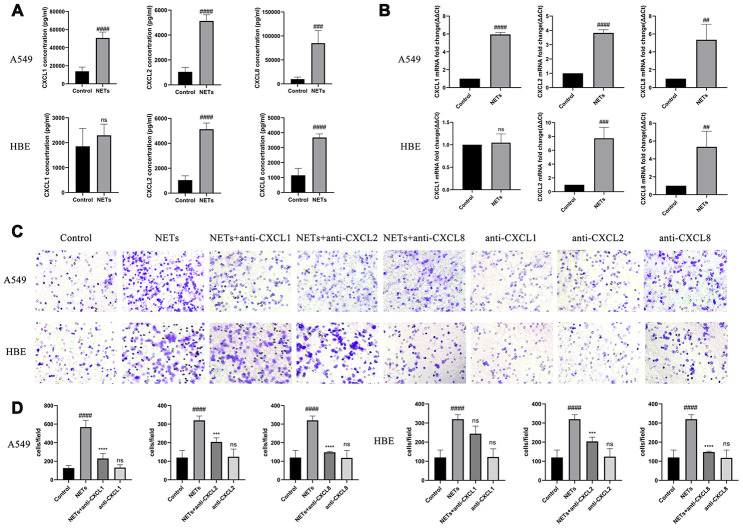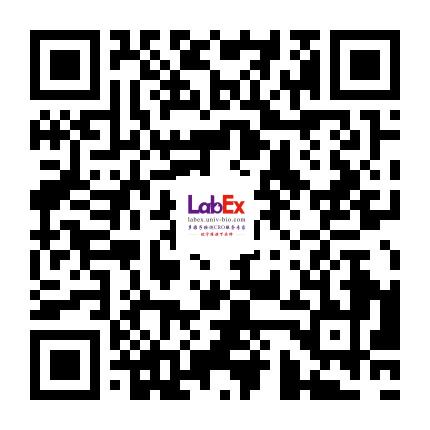Neutrophil extracellular traps amplify neutrophil recruitment and inflammation in neutrophilic asthma by stimulating the airway epithelial cells to activate the TLR4/ NF-κB pathway and secrete chemokines
airway inflammation; 气道炎症;chemotaxis;趋化作用; neutrophil extracellular traps; 中性粒细胞胞外诱捕器;neutrophilic asthma;中性粒细胞哮喘;TLR4/ NF-κB pathway;chemokines;趋化因子; LabEX支持文献- Aging (Albany NY)
- 2020
- 5.955
- 12(17):16820-16836
- Mouse
- Luminex
- Cell culture supernatant
- 呼吸系统
- 粒细胞,上皮细胞
- 哮喘
- CXCL1, CXCL2, CXCL8
Abstract
LabEx Luminex平台助力嗜中性粒细胞性哮喘的机制研究
本周为大家带来的文献为发表于Aging (Albany NY) (IF: 5.2)的” Neutrophil extracellular traps amplify neutrophil recruitment and inflammation in neutrophilic asthma by stimulating the airway epithelial cells to activate the TLR4/ NF-κB pathway and secrete chemokines”。本文使用了LabEx提供的Luminex检测服务。
哮喘可分为嗜酸性粒细胞性哮喘、嗜中性粒细胞性哮喘(NA)、混合粒细胞性哮喘和白细胞性哮喘。中性粒细胞性哮喘的特征是具有明显的中性粒细胞浸润。中性粒细胞是外周血中数量最多的先天性免疫细胞,是人体抵御病原体入侵的第一道防线。在急性炎症中,中性粒细胞会产生中性粒细胞胞外捕获物(NET)。然而,NET在哮喘中所起的作用尚不明确。
本研究假设,NET 通过刺激人支气管上皮细胞(HBE)和人肺泡上皮细胞(HAE)表达趋化因子,从而招募大量中性粒细胞。研究人员在体外和体内评估了NET的促炎作用。在 NA 小鼠模型中发现了 NETs 的形成和中性粒细胞的蜂拥。此外,研究还发现,NET通过 TLR4/NF-κB 途径刺激气道细胞表达 CXCL1、CXCL2 和 CXCL8,从而将中性粒细胞招募到炎症部位。此外,防止NET形成可减少肺中性粒细胞的招募,从而减轻中性粒细胞炎症。此外,NET的结构完整性对肺中性粒细胞的招募和中性粒细胞炎症没有影响。在NA小鼠中,NET可触发气道和肺泡上皮细胞表达趋化因子,从而通过激活TLR4/NF-κB途径招募更多的中性粒细胞。
LabEx提供的Luminex检测服务:
使用 Luminex 检测法检测细胞因子浓度按照试剂盒(LXSAHM-03)和仪器提供的说明进行 Luminex 检测。浓度由Univ-bio(LabEx)检测。
用NETs处理HBEs或A549细胞24小时后,收集细胞培养上清进行Luminex和透孔分析。与对照组相比,NETs 处理组的 HBE 和 A549 培养上清液中CXCL1、CXCL2 和 CXCL8 的表达明显增加,但 HBE 中的 CXCL1 除外。

NET 刺激 HBEs 和 A549 表达中性趋化因子。(A 和 B)上清液中 CXCL1、CXCL2 和 CXCL8 的表达采用 Luminex 和 RT-qPCR 分析。
重要发现:
NETs在急性炎症中的作用:中性粒细胞通过一种程序性细胞死亡过程生成NETs(中性粒细胞外陷阱),这些NETs在急性炎症中起关键作用,尤其在NA(中性粒细胞性哮喘)小鼠中,通过促进后续中性粒细胞的募集。
NETs与呼吸道疾病的关系:NETs在哮喘和慢性阻塞性肺病(COPD)患者的气道中存在,并与炎症相关。NETs的形成可促进Th1和Th17细胞的分化,诱导COPD,以及在气道上皮细胞中引发IL-1β、IL-6和TNF-α等炎症细胞因子的分泌。
中性粒细胞化学趋化作用:NETs刺激气道细胞(如HBEs和A549细胞)分泌CXCL1、CXCL2和CXCL8等趋化因子,从而吸引中性粒细胞迁移。这表明NETs通过促进气道细胞分泌趋化因子,招募更多中性粒细胞。
TLR4/NF-κB信号通路的激活:TLR4/NF-κB信号通路在NA模型和NETs刺激的HBEs及A549细胞中被激活。TLR4特异性抑制剂TAK-242能沉默该信号通路,减轻炎症反应和气道阻力,减少CXCL1、CXCL2和CXCL8趋化因子的生成,抑制中性粒细胞迁移浸润。
NETs与气道阻力的关系:研究显示,抑制TLR4和中性粒细胞弹性蛋白酶能降低气道阻力,而DNase I的效果不显著。尽管如此,目前尚未发现直接证据表明NETs或中性粒细胞与气道高反应性相关。
中性粒细胞募集的放大循环:研究展示了中性粒细胞募集的放大循环:第一波中性粒细胞因过敏原或刺激物引发的早期炎症反应而被募集,NETs的生成导致中性粒细胞死亡并释放到细胞外,刺激气道上皮细胞和HAEs释放趋化因子,通过TLR4/NF-κB途径招募更多中性粒细胞,新招募的中性粒细胞再次激活并生成NETs,进一步增强炎症反应。
本网站销售的所有产品及服务均不得用于人类或动物之临床诊断或治疗,仅可用于工业或者科研等非医疗目的。







 沪公网安备31011502400759号
沪公网安备31011502400759号
 营业执照(三证合一)
营业执照(三证合一)


